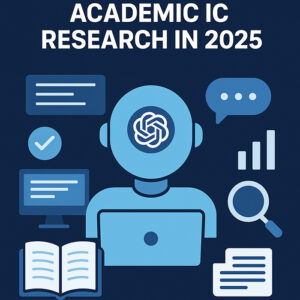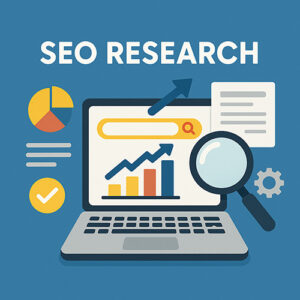Unlocking the Future: A Comprehensive Guide to Predictive Modeling
Introduction
Imagine having a crystal ball that could help you anticipate customer needs, identify potential risks, optimize resources, and make data-driven decisions with confidence. While actual fortune-telling remains in the realm of fantasy, predictive modeling offers the next best thing—a scientific approach to forecasting future outcomes based on historical data patterns.
In today’s data-rich environment, organizations that leverage predictive modeling gain a significant competitive advantage. They can anticipate market changes, understand customer behavior, optimize operations, and mitigate risks before they materialize. This powerful capability transforms reactive decision-making into proactive strategy, allowing businesses and institutions to shape their futures rather than simply respond to events as they unfold.
This guide explores the fascinating world of predictive modeling—what it is, how it works, where it’s used, and how you can harness its power to drive better outcomes in your own context. Whether you’re a business leader seeking to understand how predictive analytics can benefit your organization, a data professional looking to expand your skill set, or simply curious about this transformative technology, this guide will provide you with a solid foundation in predictive modeling concepts and applications.
What is Predictive Modeling?
Definition and Core Concepts
At its essence, predictive modeling is a statistical technique that analyzes current and historical data to make predictions about future events or behaviors. Unlike descriptive analytics (which tells us what happened) or diagnostic analytics (which explains why it happened), predictive analytics focuses on what is likely to happen next.
Predictive modeling works by identifying patterns in historical data and using these patterns to create mathematical formulas or algorithms that can be applied to new data to forecast future outcomes. These models calculate the probability of specific events occurring, allowing decision-makers to anticipate changes and respond accordingly.
For example, a retailer might use predictive modeling to forecast which customers are likely to make a purchase in the next 30 days, or a healthcare provider might predict which patients are at highest risk for readmission after discharge. In both cases, the predictive model analyzes patterns in historical data to identify factors that correlate with the outcome of interest.
The Evolution of Predictive Modeling
While predictive modeling may seem like a recent innovation tied to big data and artificial intelligence, its roots extend back centuries. The history of predictive modeling reflects the evolution of statistical thinking and computational capabilities:
Early Statistical Methods (18th-19th Centuries): The foundations of modern predictive modeling began with the development of statistical concepts like regression analysis, first formulated by Francis Galton and later refined by Karl Pearson in the 19th century. These early approaches provided methods for understanding relationships between variables—the bedrock of predictive modeling.
Mid-20th Century Advances: The 1940s-1960s saw the development of more sophisticated statistical techniques, including logistic regression, discriminant analysis, and time series forecasting. During this period, insurance companies and financial institutions began using these methods to assess risk and make business decisions.
Computer Age (1970s-1990s): The advent of accessible computing power enabled more complex predictive models and the analysis of larger datasets. This era saw the development of techniques like decision trees, neural networks, and ensemble methods, expanding the predictive modeling toolkit.
Big Data Revolution (2000s-Present): The explosion of digital data and computational power has transformed predictive modeling. Machine learning algorithms can now process enormous datasets to identify subtle patterns that would be impossible for humans to detect. Cloud computing has democratized access to these capabilities, making advanced predictive modeling accessible to organizations of all sizes.
Types of Predictive Models
Predictive models come in various forms, each with strengths and ideal use cases:
Regression Models: These predict continuous numerical outcomes by establishing relationships between variables. For instance, a linear regression model might predict a house’s selling price based on square footage, neighborhood, number of bedrooms, and other factors.
Classification Models: These predict categorical outcomes—assigning observations to predefined categories. A classification model might predict whether a loan applicant will default (yes/no) or which product category a customer is most likely to purchase next.
Time Series Models: Specialized for data collected over regular time intervals, these models forecast future values based on past observations. They’re ideal for predicting stock prices, sales volumes, or website traffic over time.
Clustering Models: While technically unsupervised learning techniques, clustering can support predictive efforts by grouping similar entities, which can then be used as inputs for other predictive models. Customer segmentation is a common application.
Neural Networks and Deep Learning: These sophisticated models excel at identifying complex, non-linear patterns in data and are particularly powerful for image recognition, natural language processing, and other complex prediction tasks.
Ensemble Models: These combine multiple models to improve prediction accuracy and robustness. Popular approaches like Random Forests and Gradient Boosting often outperform single models on complex prediction tasks.
Each model type has different strengths, weaknesses, and appropriate applications. The selection of the right model depends on the specific prediction task, the nature of the available data, and the required accuracy and interpretability.
How Predictive Modeling Works
Predictive modeling follows a structured process that transforms raw data into actionable predictions. Understanding this process is essential for successful implementation and interpretation of predictive analytics. Let’s explore each step in detail:
1. Data Collection
The foundation of any predictive model is data—and the quality, quantity, and relevance of that data directly impact model performance. Data collection involves identifying and gathering information that is likely to influence the outcome you want to predict.
Types of Data for Predictive Modeling:
- Historical transactional data: Past purchases, interactions, claims, payments, etc.
- Demographic data: Age, gender, location, income, education level
- Behavioral data: Website clicks, app usage, sensor readings, service utilization
- Contextual data: Time, weather, economic indicators, competitive activities
- Unstructured data: Text reviews, social media posts, images, audio recordings
Key Considerations During Data Collection:
- Relevance: Does the data relate to the outcome you’re trying to predict?
- Completeness: Do you have enough historical instances to identify meaningful patterns?
- Recency: Is the data recent enough to reflect current conditions?
- Permissions and Privacy: Do you have the necessary permissions to use the data for analysis?
- Data Sources: Are you integrating data from multiple sources? How will you combine them?
For example, a telecommunications company predicting customer churn might collect historical subscription data, customer service interactions, usage patterns, demographic information, and competitor offerings. The broader and deeper the data collected, the more potential predictive signals the model can identify.
2. Data Preprocessing
Raw data rarely comes in a form that’s immediately suitable for modeling. Data preprocessing transforms raw data into a clean, structured format that predictive algorithms can effectively use.
Key Data Preprocessing Steps:
Data Cleaning:
- Handling missing values (through imputation or removal)
- Identifying and addressing outliers
- Correcting inconsistencies and errors
- Standardizing formats (dates, currencies, units)
Feature Engineering:
- Creating new variables from existing ones to capture important relationships
- Transforming variables to improve model performance (logarithmic, polynomial transformations)
- Encoding categorical variables into numerical formats (one-hot encoding, label encoding)
- Extracting features from text, images, or other unstructured data
Data Normalization/Standardization:
- Scaling numerical features to a standard range (typically 0-1 or with mean 0 and standard deviation 1)
- Ensuring that no single feature dominates the model due to its scale
Dimensionality Reduction:
- Reducing the number of variables while preserving important information
- Techniques include Principal Component Analysis (PCA), feature selection, and feature extraction
For instance, when predicting house prices, feature engineering might include creating variables like “price per square foot,” combining bedroom and bathroom counts into a “total rooms” feature, or creating neighborhood clusters based on various attributes.
The quality of preprocessing directly impacts model performance—often more significantly than the choice of modeling algorithm. Well-processed data allows patterns to emerge more clearly, enabling more accurate predictions.
3. Model Selection
Choosing the right model for your predictive task involves balancing accuracy, interpretability, computational requirements, and the specific characteristics of your data and prediction goal.
Factors Influencing Model Selection:
Nature of the Prediction Task:
- Classification vs. regression
- Binary vs. multi-class classification
- Time series vs. cross-sectional prediction
Data Characteristics:
- Data volume (number of observations)
- Dimensionality (number of features)
- Linear vs. non-linear relationships
- Presence of interactions between variables
Model Complexity Considerations:
- Simple models (like linear regression) are more interpretable but may miss complex patterns
- Complex models (like deep neural networks) can capture intricate relationships but require more data and are harder to interpret
Popular Predictive Modeling Algorithms:
Linear and Logistic Regression:
- Best for: Understanding relationships between variables, situations requiring high interpretability
- Advantages: Simple to implement, easily interpretable, computationally efficient
- Limitations: Assumes linear relationships, may underperform with complex, non-linear patterns
Decision Trees:
- Best for: Situations requiring transparent decision rules
- Advantages: Intuitive visualization, handles non-linear relationships, automatically performs feature selection
- Limitations: Tendency to overfit, less accurate than ensemble methods
Random Forests:
- Best for: General-purpose prediction with moderate to large datasets
- Advantages: Robust to outliers, handles non-linear relationships, provides feature importance
- Limitations: Less interpretable than single trees, computationally more intensive
Gradient Boosting Machines (GBM):
- Best for: Winning predictive performance in structured data problems
- Advantages: Often achieves state-of-the-art accuracy, handles mixed data types
- Limitations: Requires careful tuning, more complex to implement, computationally intensive
Support Vector Machines (SVM):
- Best for: Classification with clear decision boundaries
- Advantages: Effective in high-dimensional spaces, works well with non-linear boundaries via kernels
- Limitations: Challenging to interpret, sensitive to parameter settings
Neural Networks and Deep Learning:
- Best for: Complex pattern recognition in large datasets, especially unstructured data (images, text)
- Advantages: Capable of learning intricate patterns, highly flexible architecture
- Limitations: Requires substantial data, computationally intensive, difficult to interpret
The selection process often involves testing multiple models and comparing their performance on validation data. In practice, many predictive modeling projects leverage ensemble methods that combine multiple models to improve predictive accuracy.
4. Training and Testing
Once you’ve selected appropriate models, the next step is to train them on historical data and evaluate their performance. This process ensures that the model can effectively generalize patterns from the training data to make accurate predictions on new, unseen data.
The Training-Testing Framework:
Data Splitting:
- Training set (typically 60-80% of data): Used to build the model
- Validation set (typically 10-20%): Used for tuning model parameters
- Test set (typically 10-20%): Used for final performance evaluation
Cross-Validation:
- Technique that makes more efficient use of available data
- Typically involves dividing data into k-folds (often 5 or 10)
- Model is trained k times, each time using a different fold as the validation set
- Performance is averaged across all iterations
- Helps assess how well the model will generalize to new data
Model Training:
- During training, the model learns to optimize its parameters based on the training data
- For regression, this might involve minimizing the squared difference between predicted and actual values
- For classification, it might involve maximizing the probability of correct class assignment
Hyperparameter Tuning:
- Many models have hyperparameters that control their structure and learning process
- These are adjusted using the validation set
- Approaches include grid search, random search, and Bayesian optimization
- Goal is to find the hyperparameter settings that maximize performance on the validation data
Model Evaluation Metrics:
For regression problems:
- Mean Absolute Error (MAE): Average absolute difference between predicted and actual values
- Mean Squared Error (MSE): Average of the squared differences between predicted and actual values
- Root Mean Squared Error (RMSE): Square root of MSE, providing an error measure in the same units as the target variable
- R-squared: Proportion of variance in the dependent variable that’s predictable from the independent variables
For classification problems:
- Accuracy: Proportion of correct predictions among all predictions
- Precision: Proportion of true positive predictions among all positive predictions
- Recall (Sensitivity): Proportion of true positive predictions among all actual positives
- F1 Score: Harmonic mean of precision and recall
- Area Under the ROC Curve (AUC): Measures the model’s ability to distinguish between classes
For example, a credit risk model might prioritize high recall to ensure it catches most potential defaults, even at the cost of some false positives. Conversely, a model recommending products to customers might prioritize precision to ensure recommendations are relevant.
5. Deployment and Monitoring
After developing and validating a predictive model, the final step is putting it into production where it can generate real-time or batch predictions and continuously improve over time.
Deployment Approaches:
Batch Prediction:
- Model runs periodically (daily, weekly, monthly) to generate predictions for a set of records
- Useful for applications like monthly churn prediction or quarterly budget forecasting
- Generally simpler to implement and maintain
Real-time Prediction:
- Model generates predictions on-demand as new data becomes available
- Essential for applications like fraud detection, recommendation systems, or dynamic pricing
- Requires more sophisticated infrastructure and monitoring
Deployment Architecture:
- API endpoints for model serving
- Model containers (Docker) for consistent environments
- Cloud-based deployment for scalability
- Edge deployment for applications requiring low latency
Model Monitoring and Maintenance:
Performance Monitoring:
- Tracking prediction accuracy against actual outcomes
- Setting up alerts for performance degradation
- Comparing model performance across different segments
Data Drift Detection:
- Monitoring for changes in the distribution of input variables
- Alerting when new data differs significantly from training data
- Retraining models when drift exceeds acceptable thresholds
Continuous Improvement:
- Regular retraining with new data
- A/B testing of model variants
- Incorporating user feedback into model refinement
- Expanding feature sets as new data sources become available
For instance, a financial institution deploying a fraud detection model would implement real-time scoring of transactions, monitor false positive and false negative rates, adjust thresholds based on feedback, and regularly retrain the model with recent fraud patterns.
The deployment phase transforms a predictive model from an analytical exercise into a business asset that continuously delivers value through actionable predictions.
Applications of Predictive Modeling
Predictive modeling has transformed decision-making across virtually every industry. Let’s explore some of the most impactful applications in detail:
Marketing and Sales
Customer Segmentation: Predictive modeling can identify distinct customer groups based on purchasing behavior, demographics, and engagement patterns. These segments enable more targeted marketing efforts tailored to specific customer needs and preferences.
For example, an e-commerce company might identify segments like “price-sensitive occasional shoppers,” “loyal brand enthusiasts,” and “trend-following frequent purchasers,” each requiring different marketing approaches.
Customer Lifetime Value (CLV) Prediction: Models can forecast the total value a customer will bring to a business over their entire relationship, helping companies determine how much to invest in acquiring and retaining different customer types.
A subscription business might use CLV predictions to identify which customer characteristics correlate with long-term value, then adjust acquisition spending across different channels based on the typical CLV of customers from each source.
Churn Prediction: By analyzing patterns in customer behavior, predictive models can identify which customers are likely to stop doing business with a company in the near future, enabling proactive retention efforts.
For instance, a telecommunications provider might notice that decreased usage, increased customer service contacts, and competitive promotional periods all predict higher churn probability, allowing them to offer targeted retention incentives to at-risk customers.
Recommendation Systems: Predictive models power the product recommendations we encounter on websites like Amazon (“Customers who bought this also bought…”) and content suggestions on platforms like Netflix or Spotify.
These systems analyze patterns in user behavior and preferences, combining collaborative filtering (based on similar users) with content-based approaches (based on item attributes) to predict which items a user is likely to be interested in.
Demand Forecasting: Predictive models help businesses anticipate future demand for products and services, optimizing inventory, staffing, and resource allocation.
A retailer might use time series models incorporating seasonality, trends, special events, and economic indicators to forecast demand for each product category, ensuring they have adequate stock without excessive inventory.
Healthcare
Disease Risk Prediction: Predictive models can identify patients at elevated risk for specific diseases based on genetics, lifestyle factors, medical history, and demographic information.
For example, models can predict diabetes risk based on factors like family history, BMI, activity levels, and lab results, allowing healthcare providers to recommend preventive interventions for high-risk individuals.
Hospital Readmission Prevention: Models predict which patients are likely to be readmitted shortly after discharge, enabling targeted interventions to prevent these costly and potentially harmful events.
A hospital might identify that patients with certain combinations of conditions, medication regimens, and limited social support are at higher risk for readmission, allowing case managers to provide additional resources and follow-up care.
Treatment Optimization: Predictive models can help determine which treatments are likely to be most effective for specific patients based on their unique characteristics and medical profiles.
In oncology, for instance, models can predict how tumors with particular genetic profiles will respond to different treatment protocols, supporting personalized medicine approaches.
Resource Allocation: Healthcare systems use predictive modeling to forecast patient volumes, staffing needs, and resource requirements across different departments and timeframes.
A hospital emergency department might predict hourly patient arrivals based on historical patterns, weather conditions, local events, and recent disease trends, allowing them to staff appropriately and minimize wait times.
Finance
Credit Scoring: Perhaps the most established application of predictive modeling in finance, credit scoring models assess the likelihood that loan applicants will repay their debts based on their financial history and circumstances.
These models analyze factors like payment history, current debt levels, length of credit history, new credit applications, and types of credit used to generate a score that predicts default risk.
Fraud Detection: Predictive models identify potentially fraudulent transactions by flagging unusual patterns that deviate from a customer’s typical behavior or match known fraud patterns.
A credit card company’s fraud detection model might consider factors like transaction location, merchant type, transaction amount, and timing relative to previous purchases, generating a real-time risk score for each transaction.
Algorithmic Trading: Sophisticated predictive models analyze market data to identify trading opportunities and execute transactions at optimal times and prices.
These models might incorporate price movements, trading volumes, economic indicators, company news, and even sentiment analysis of social media and news sources to predict short-term price movements.
Insurance Premium Pricing: Insurers use predictive modeling to set premiums based on the predicted risk associated with specific policyholders.
Auto insurance companies, for example, might predict accident likelihood based on driving history, vehicle type, annual mileage, geographic location, and increasingly, telematics data that captures actual driving behavior.
Supply Chain and Operations
Inventory Optimization: Predictive models help determine optimal inventory levels across different products and locations, balancing the costs of stockouts against the costs of excess inventory.
A manufacturer might use forecasting models that incorporate sales trends, seasonality, production lead times, and supply variability to determine when and how much to order for each component.
Predictive Maintenance: By analyzing equipment sensor data, usage patterns, and maintenance history, models can predict when machinery is likely to fail, enabling preventive maintenance before costly breakdowns occur.
An airline might predict when specific aircraft components will need replacement based on flight hours, environmental conditions, and performance metrics, scheduling maintenance during already-planned downtime.
Route Optimization: Delivery and logistics companies use predictive modeling to determine efficient routes that minimize time, distance, and fuel consumption while meeting delivery windows.
These models might incorporate traffic patterns, weather conditions, vehicle capacities, delivery priorities, and even driver performance to optimize routing decisions in real-time.
Quality Control: Manufacturers use predictive models to identify factors that influence product quality and detect potential quality issues before products reach customers.
For example, a semiconductor manufacturer might analyze thousands of process parameters to predict which wafers are likely to have defects, allowing them to adjust processes in real-time or prioritize testing resources.
Public Sector and Urban Planning
Crime Prediction and Prevention: Law enforcement agencies use predictive modeling to identify areas with elevated crime risk at specific times, allowing more effective resource allocation.
These models analyze historical crime data along with factors like time of day, day of week, weather conditions, proximity to certain facilities, and socioeconomic indicators to generate risk maps for different crime types.
Traffic Management: Cities use predictive models to anticipate traffic patterns and congestion points, optimizing signal timing and providing alternative route recommendations.
These systems incorporate historical traffic data, current conditions, weather, events, construction activities, and public transit operations to predict travel times and congestion levels across the road network.
Disaster Response Planning: Predictive models help emergency managers anticipate the impact of natural disasters and plan appropriate response measures.
For instance, hurricane impact models might predict storm surge levels, flooding extent, power outage probabilities, and evacuation needs based on storm characteristics, infrastructure vulnerability, and population distribution.
Public Health Surveillance: Health agencies use predictive modeling to detect disease outbreaks early and forecast their spread.
During flu season, for example, models might analyze emergency room visits, pharmacy sales, school absences, and social media mentions to detect influenza outbreaks earlier than traditional reporting methods would allow.
Popular Predictive Modeling Tools and Platforms
The landscape of predictive modeling tools has expanded dramatically in recent years, offering options for users with varying levels of technical expertise. Here’s a detailed look at the leading tools and platforms:
Python Ecosystem
Python has emerged as perhaps the most popular language for predictive modeling, thanks to its readable syntax, extensive libraries, and strong community support.
Scikit-learn:
- A comprehensive machine learning library offering implementations of most common algorithms
- Provides consistent interfaces across different models
- Includes tools for preprocessing, model selection, and evaluation
- Best for: General-purpose machine learning on structured data
TensorFlow:
- Google’s open-source deep learning framework
- Offers both high-level APIs (Keras) and lower-level flexibility
- Supports distributed training across multiple GPUs/TPUs
- Best for: Deep learning projects, especially those requiring deployment at scale
PyTorch:
- Facebook’s deep learning framework, known for its intuitive design
- Dynamic computational graph makes debugging easier
- Popular in research communities
- Best for: Research projects, complex neural network architectures
Pandas:
- Data manipulation and analysis library
- Essential for data preprocessing and exploration
- Provides DataFrame structure for working with tabular data
- Best for: Data cleaning, transformation, and basic analysis
NumPy and SciPy:
- Fundamental libraries for scientific computing
- Provide efficient array operations and mathematical functions
- Form the foundation for most Python data science tools
- Best for: Numerical operations and scientific computing
Statsmodels:
- Focus on statistical models and hypothesis testing
- Provides detailed statistical summaries and diagnostics
- Best for: Econometric models, time series analysis, statistical inference
R Ecosystem
R was designed specifically for statistical computing and graphics, making it powerful for data analysis and modeling.
Caret (Classification And REgression Training):
- Unified interface to hundreds of machine learning algorithms
- Streamlines the model training and evaluation process
- Provides tools for data splitting, preprocessing, and feature selection
- Best for: Streamlined workflow for training and comparing multiple models
tidymodels:
- Collection of packages for modeling and machine learning using tidyverse principles
- Provides consistent interfaces and tidy data structures
- Emphasizes good statistical practices
- Best for: R users who prefer the tidyverse ecosystem
XGBoost, LightGBM, and catboost:
- High-performance implementations of gradient boosting
- Available in both R and Python
- Offer state-of-the-art performance on many structured data problems
- Best for: Competitions, problems requiring high predictive accuracy
randomForest:
- Implementation of the random forest algorithm
- Simple to use with minimal tuning required
- Best for: Quick implementation of ensemble tree methods
forecast:
- Specialized package for time series forecasting
- Implements ARIMA, exponential smoothing, and other time series models
- Provides automatic model selection features
- Best for: Time series analysis and forecasting
Commercial Platforms
For organizations seeking end-to-end solutions with support and user-friendly interfaces, commercial platforms offer comprehensive capabilities.
SAS:
- Enterprise-grade analytics platform with long history in predictive modeling
- Comprehensive suite of tools covering the entire analytics lifecycle
- Strong in data management and integration with enterprise systems
- Best for: Large organizations with established SAS investments
IBM SPSS and Watson Studio:
- SPSS offers traditional statistical modeling with graphical interfaces
- Watson Studio provides modern machine learning capabilities in the cloud
- Integration with IBM’s broader AI and data platforms
- Best for: Organizations seeking integrated solutions within IBM ecosystem
MATLAB:
- Computing platform with strong mathematical foundation
- Comprehensive toolboxes for statistics, machine learning, and deep learning
- Excels at algorithm development and simulation
- Best for: Engineering applications, signal processing, image analysis
Alteryx:
- Data preparation and analytics platform with intuitive visual workflow
- Allows blending of data from multiple sources
- Integrates with R and Python for custom modeling capabilities
- Best for: Business analysts needing to combine data preparation and analytics
DataRobot:
- Automated machine learning platform
- Automatically tests multiple algorithms and preprocessing approaches
- Provides model explanations and deployment options
- Best for: Organizations looking to accelerate model development with limited data science resources
AutoML Platforms
Automated Machine Learning (AutoML) platforms aim to make predictive modeling more accessible by automating many technical decisions.
Google Cloud AutoML:
- Suite of machine learning products for different data types
- Minimal coding required
- Leverages Google’s infrastructure and expertise
- Best for: Organizations already using Google Cloud with limited ML expertise
H2O.ai:
- Open-source AutoML platform with commercial offerings
- Automates feature engineering, model selection, and hyperparameter tuning
- Available as a library for Python and R or as a standalone platform
- Best for: Organizations seeking balance between automation and control
Amazon SageMaker Autopilot:
- Automated machine learning within AWS ecosystem
- Generates explanations of model decisions
- Seamless integration with other AWS services
- Best for: AWS customers looking to accelerate model development
Microsoft Azure AutoML:
- Automated ML capabilities within Azure Machine Learning
- Handles feature engineering, algorithm selection, and hyperparameter tuning
- Strong integration with other Microsoft products
- Best for: Organizations in Microsoft ecosystem
Choosing the Right Tool
The selection of appropriate tools depends on several factors:
Technical Expertise:
- High expertise: Python/R libraries offer maximum flexibility
- Moderate expertise: AutoML platforms provide good balance
- Limited expertise: Commercial platforms with visual interfaces
Scale of Deployment:
- Enterprise-scale: Cloud platforms (AWS, Azure, Google Cloud)
- Department-level: Commercial packages or open-source with support
- Individual projects: Open-source libraries
Integration Requirements:
- Existing data infrastructure often influences tool selection
- Consider compatibility with data sources and deployment environments
Budget Constraints:
- Open-source tools minimize software costs but may require more expertise
- Commercial platforms offer support and reduce development time
Many organizations employ a hybrid approach, using different tools for different stages of the predictive modeling process or for different types of projects.
Challenges and Considerations in Predictive Modeling
While predictive modeling offers powerful capabilities, successful implementation requires navigating several challenges and considerations:
Data Quality and Availability
Insufficient Data Volume:
- Many predictive algorithms, especially deep learning, require substantial amounts of historical data
- Limited data can lead to models that capture noise rather than true patterns
- Techniques like data augmentation, transfer learning, and simpler models can help address this challenge
Data Quality Issues:
- Missing values, inconsistencies, and errors can significantly impact model performance
- Establishing robust data governance and quality assurance processes is essential
- Automated data quality monitoring can help detect issues early
Biased or Non-Representative Data:
- Historical data often contains biases that models will learn and perpetuate
- Important to assess whether training data truly represents the population to which predictions will be applied
- May require techniques like stratified sampling or deliberate correction of historical biases
Data Privacy and Regulatory Compliance:
- Regulations like GDPR, CCPA, and HIPAA restrict how data can be used
- May limit the features available for modeling or require anonymization techniques
- Privacy-preserving machine learning approaches can help address these challenges
Model Development Challenges
Feature Selection and Engineering:
- Determining which variables to include in models is both art and science
- Too many irrelevant features can introduce noise and reduce performance
- Too few features may miss important predictive signals
- Requires domain expertise combined with statistical techniques
Model Selection and Complexity:
- Balancing model complexity against available data and interpretability needs
- Simple models may underfit complex patterns
- Complex models may overfit noise in the training data
- Requires careful validation and sometimes ensemble approaches
Overfitting:
- Models that perform well on training data but fail on new data
- Indicates the model has learned the noise in the training data rather than true patterns
- Addressed through techniques like cross-validation, regularization, and ensemble methods
Interpretability vs. Accuracy Tradeoff:
- More accurate models (like deep neural networks) are often less interpretable
- Less accurate models (like decision trees) are often more interpretable
- Regulatory requirements or business needs may necessitate interpretable models
- Emerging techniques in explainable AI aim to address this tradeoff
Deployment and Operational Challenges
Data Drift and Model Decay:
- Models assume that the future will resemble the past
- Changes in customer behavior, market conditions, or data collection processes can reduce model performance over time
- Requires ongoing monitoring and regular retraining
Technical Implementation:
- Moving from prototype to production often introduces technical challenges
- Differences between development and production environments
- Scaling to handle required prediction volume
- Integration with existing systems and workflows
Organizational Adoption:
- Resistance to relying on “black box” predictions
- Need for change management and education
- Balancing algorithmic decisions with human judgment
- Building trust in model outputs
Ethical Considerations:
- Potential for algorithmic bias and discrimination
- Questions of fairness and equity in model outcomes
- Transparency about how predictions influence decisions
- Accountability for consequences of model-driven decisions
Strategies for Addressing Challenges
Robust Validation Practices:
- Implement rigorous cross-validation procedures
- Test models on diverse datasets and scenarios
- Validate across different segments and time periods
- Establish clear performance thresholds for deployment
Continuous Monitoring and Improvement:
- Monitor data distributions for drift
- Track model performance against actual outcomes
- Establish regular retraining schedules
- Implement A/B testing for model updates
Explainable AI Techniques:
- Use model-agnostic explanation methods like SHAP (SHapley Additive exPlanations)
- Consider inherently interpretable models where appropriate
- Provide both global explanations (overall model behavior) and local explanations (specific predictions)
- Translate technical explanations into business-relevant terms
Cross-Functional Collaboration:
- Involve domain experts throughout the modeling process
- Engage stakeholders who will use or be affected by predictions
- Establish clear communication between technical and business teams
- Create feedback loops for continuous improvement
Future Trends in Predictive Modeling
The field of predictive modeling continues to evolve rapidly. Here are some emerging trends that are shaping its future:
Automated Machine Learning (AutoML)
AutoML is democratizing predictive modeling by automating many technical aspects of the model development process:
End-to-End Automation:
- Automated feature selection and engineering
- Automatic model selection and hyperparameter optimization
- Automated deployment and monitoring workflows
Increased Accessibility:
- Making predictive modeling accessible to business users without deep technical expertise
- Allowing data scientists to focus on more complex problems and interpretations
- Accelerating the model development process
Future Directions:
- More sophisticated feature engineering automation
- Better handling of complex data types
- Integration of domain knowledge into automated processes
- Customizable automation levels for different user needs
Edge Computing and Federated Learning
As computing power at the edge increases, predictive modeling is moving beyond centralized cloud environments:
Edge Deployment:
- Running predictions directly on devices (smartphones, IoT devices, etc.)
- Reducing latency for time-sensitive applications
- Operating in environments with limited connectivity
- Addressing privacy concerns by keeping data local
Federated Learning:
- Training models across multiple devices without centralizing data
- Preserving privacy by sharing model updates rather than raw data
- Enabling collaboration while maintaining data sovereignty
- Creating more robust models through diverse training environments
Future Applications:
- Real-time personalization on mobile devices
- Autonomous vehicle decision-making
- Smart home and industrial IoT applications
- Healthcare applications with sensitive patient data
Explainable AI and Responsible AI
As predictive models impact more critical decisions, the need for transparency and responsibility increases:
Advances in Explainability:
- Development of more sophisticated explanation techniques
- Better visualizations of model reasoning
- Explanations tailored to different stakeholder needs
- Integration of explainability into model development process
Fairness and Bias Mitigation:
- More advanced techniques for detecting and mitigating bias
- Standards and metrics for algorithmic fairness
- Regulatory frameworks requiring demonstrable fairness
- Tools for auditing models across different demographic groups
Future Developments:
- Industry standards for AI transparency
- Regulatory requirements for high-impact models
- Integrated tools for monitoring ethical concerns
- Design approaches that balance performance and responsibility
Deep Learning Advances
Deep learning continues to push the boundaries of what’s possible in predictive modeling:
Multimodal Learning:
- Models that combine different types of data (text, images, time series, etc.)
- More comprehensive understanding of complex phenomena
- Breaking down silos between different data types
- Creating more holistic predictions
Self-Supervised Learning:
- Leveraging unlabeled data more effectively
- Reducing dependence on large labeled datasets
- Creating more robust feature representations
- Improving transfer learning capabilities
Neurosymbolic AI:
- Combining neural networks with symbolic reasoning
- Incorporating domain knowledge and logical rules
- Improving interpretability while maintaining performance
- Enabling more complex reasoning in predictive systems
Future Impact:
- More accurate predictions with less labeled data
- Better handling of rare events and edge cases
- More adaptive models that learn continuously
- Predictions that incorporate multiple perspectives and data sources
Quantum Machine Learning
While still emerging, quantum computing has the potential to transform certain aspects of predictive modeling:
Quantum Advantages:
- Potential for solving certain optimization problems exponentially faster
- New approaches to feature spaces and kernel methods
- Quantum-inspired classical algorithms
- Novel approaches to probabilistic modeling
Current Limitations:
- Hardware constraints and error rates
- Limited quantum advantage for many practical problems
- Complex implementation requiring specialized expertise
- Nascent ecosystem of tools and frameworks
Future Potential:
- Breakthrough capabilities for specific problem classes
- Hybrid classical-quantum approaches
- New modeling paradigms based on quantum principles
- Potential advantages in high-dimensional feature spaces
Getting Started with Predictive Modeling
Ready to begin your own predictive modeling journey? Here’s a structured approach to get started:
Define Your Objective
Before diving into techniques and tools, clarify what you’re trying to predict and why:
Identify Business Needs:
- What decisions could be improved with better predictions?
- What outcomes are most important to your organization?
- What would constitute a successful predictive model?
Formulate Specific Prediction Goals:
- Define precisely what you want to predict (target variable)
- Determine whether it’s a classification or regression problem
- Establish the timeframe for predictions
- Define the unit of analysis (customer, transaction, product, etc.)
Establish Success Metrics:
- Technical metrics (accuracy, precision, recall, RMSE, etc.)
- Business metrics (cost savings, revenue increase, improved outcomes)
- Deployment metrics (prediction speed, resource requirements)
For example, rather than a vague goal like “predict customer behavior,” define a specific objective like “predict which customers have a >20% probability of canceling their subscription within the next 30 days, with recall of at least 80%.”
Start Simple
Begin with straightforward approaches before tackling more complex methods:
Choose Accessible Tools:
- For non-technical users: Start with user-friendly platforms like Google Sheets, Excel, or Tableau
- For technical users new to predictive modeling: Begin with scikit-learn in Python or caret in R
- Consider AutoML platforms for quicker results
Begin with Basic Models:
- Linear/logistic regression
- Decision trees
- Simple ensemble methods like Random Forest
Use Small, Clean Datasets:
- Start with a manageable amount of high-quality data
- Focus on a few strongly predictive features
- Expand complexity gradually as you gain confidence
Implement Basic Validation:
- Train/test splits
- Simple cross-validation
- Clear evaluation metrics
This approach allows you to establish a baseline performance level and understand the fundamentals before moving to more sophisticated techniques.
Build Your Skills Progressively
Develop your predictive modeling capabilities through a structured learning path:
Foundational Knowledge:
- Basic statistics and probability
- Data manipulation and cleaning techniques
- Exploratory data analysis
- Model evaluation principles
Technical Skills:
- Programming languages (Python or R)
- Key libraries and frameworks
- Data visualization techniques
- Feature engineering approaches
Advanced Topics:
- Ensemble methods
- Deep learning fundamentals
- Time series forecasting
- Natural language processing
- Computer vision
Resources for Learning:
Online Courses:
- Coursera: “Machine Learning” by Andrew Ng
- edX: “Data Science and Machine Learning Essentials”
- Udemy: “Python for Data Science and Machine Learning Bootcamp”
- Fast.ai: “Practical Deep Learning for Coders”
Books:
- “An Introduction to Statistical Learning” by James, Witten, Hastie, and Tibshirani
- “Hands-On Machine Learning with Scikit-Learn, Keras & TensorFlow” by Aurélien Géron
- “Python for Data Analysis” by Wes McKinney
- “Predictive Modeling with Python and Scikit-Learn” by Kevin Jolly
Communities:
- Kaggle (competitions and notebooks)
- Stack Overflow for technical questions
- Reddit communities like r/MachineLearning and r/datascience
- Local meetups and user groups
Understand Your Data
Thorough data understanding is critical for successful predictive modeling:
Exploratory Data Analysis (EDA):
- Examine distributions of individual variables
- Identify relationships between variables
- Look for patterns, outliers, and anomalies
- Understand data quality issues
Domain Knowledge Integration:
- Consult with subject matter experts
- Understand business rules and constraints
- Identify external factors that might influence predictions
- Learn which variables are likely to be predictive based on domain expertise
Data Preparation Techniques:
- Cleaning and normalization
- Handling missing values appropriately
- Creating derived features that capture domai









